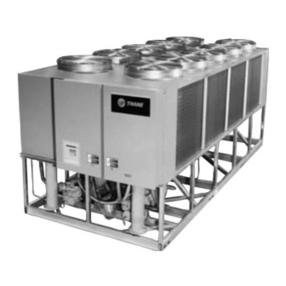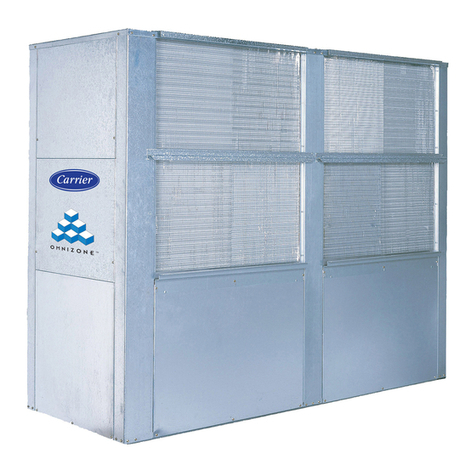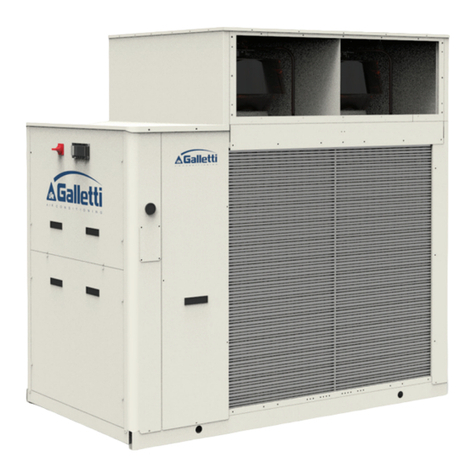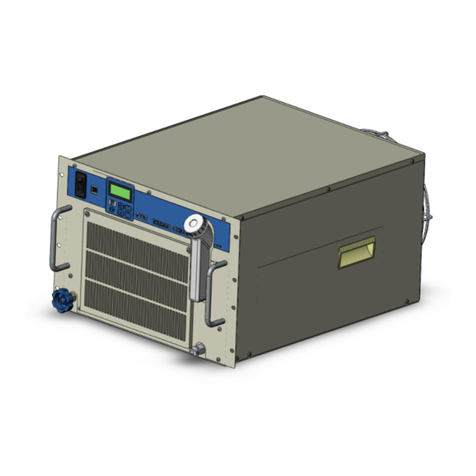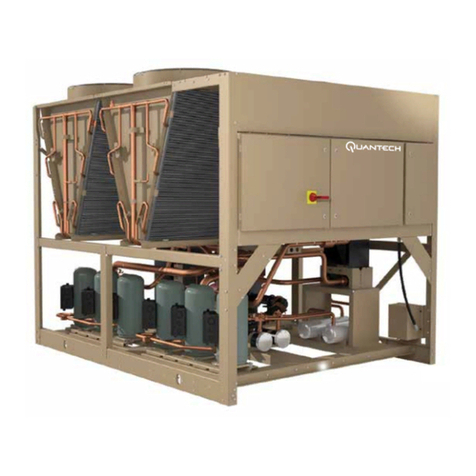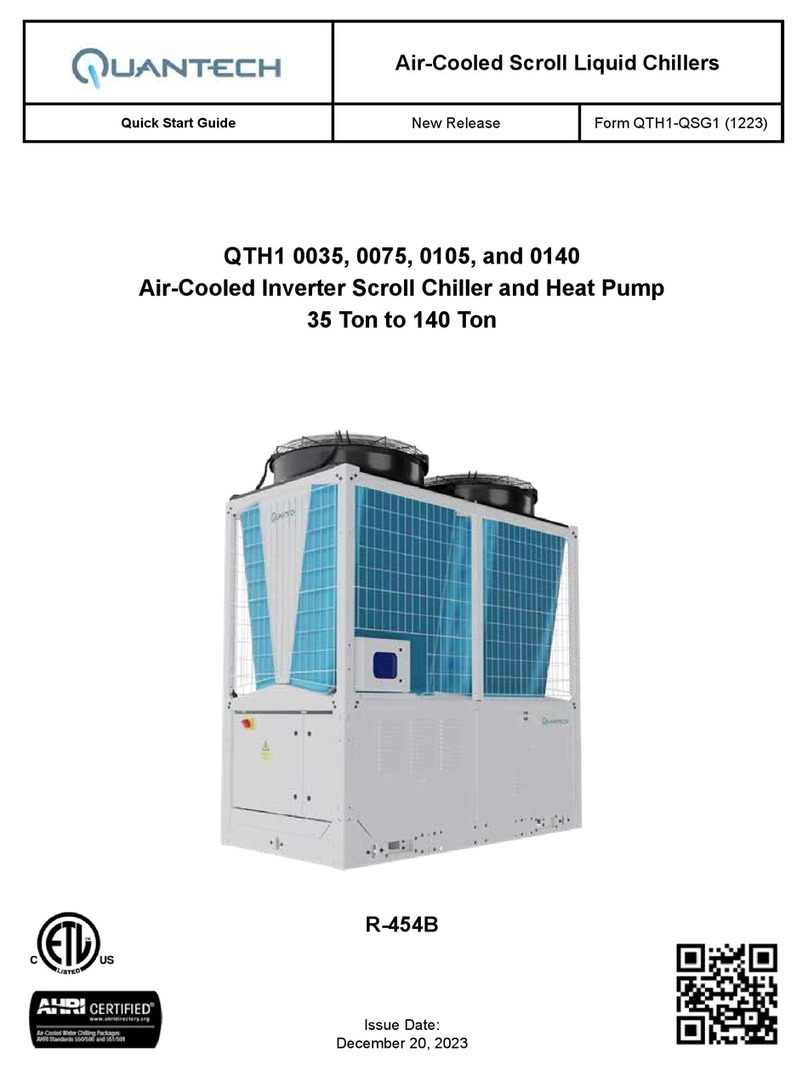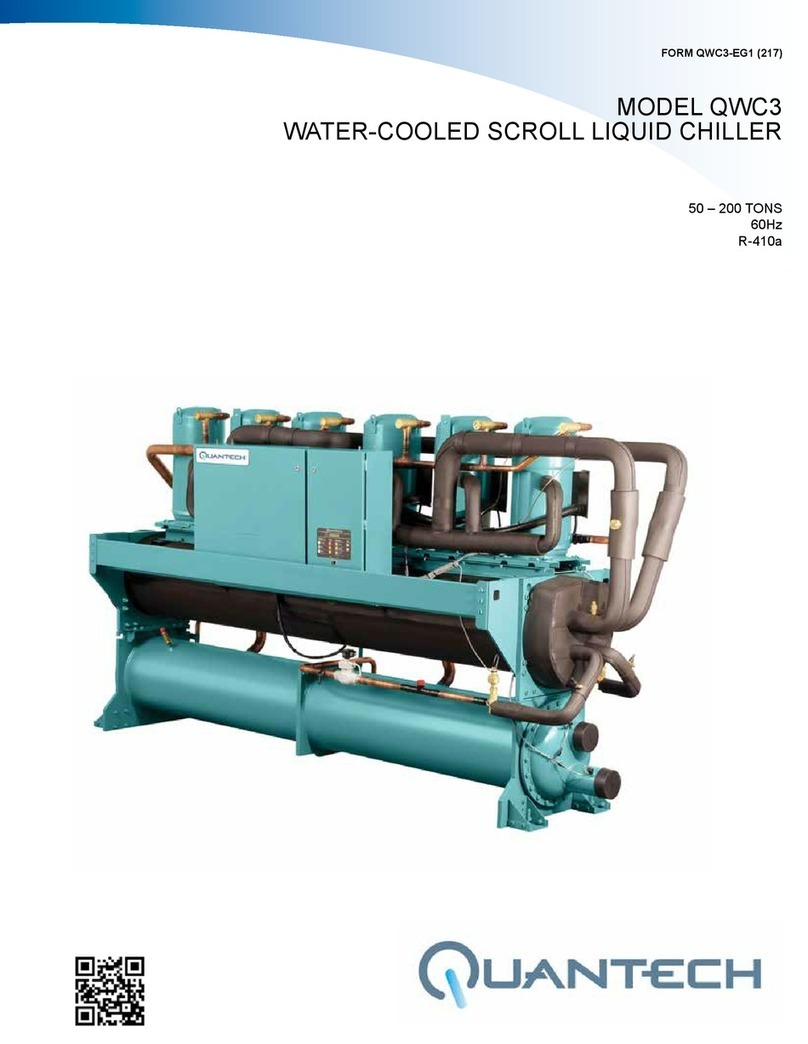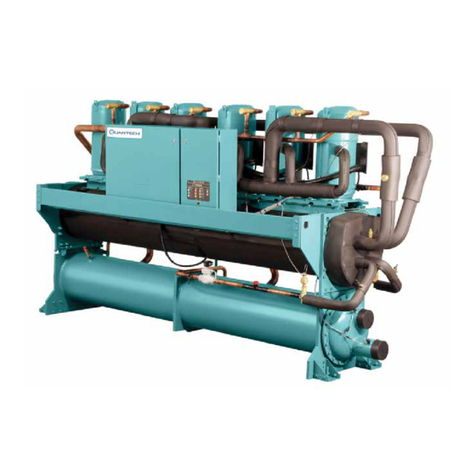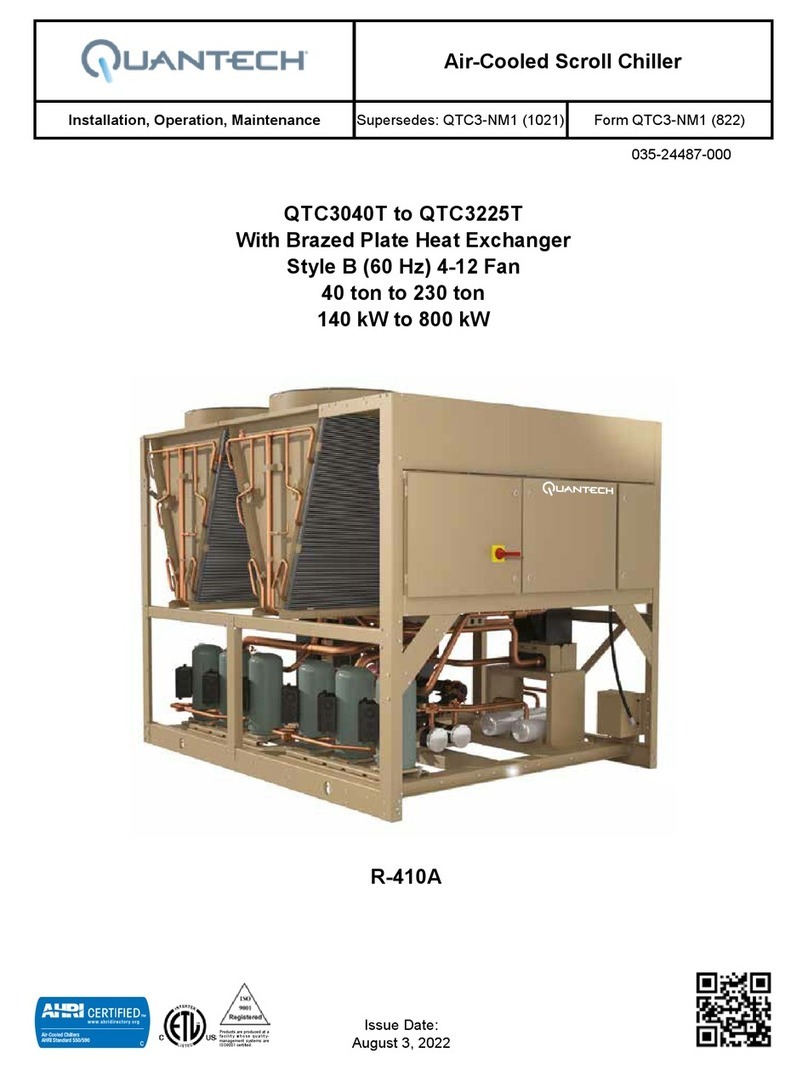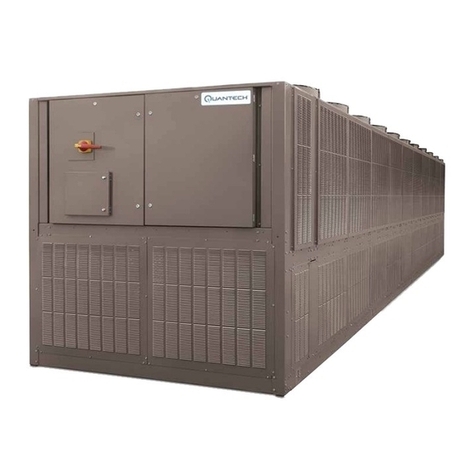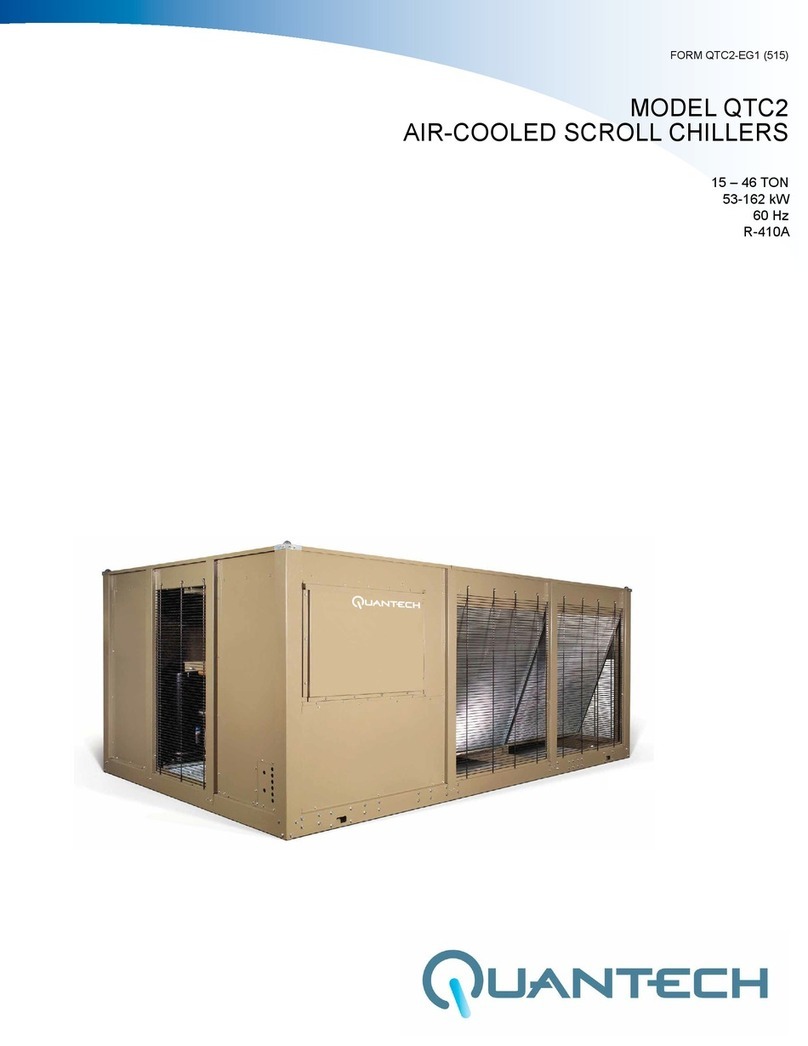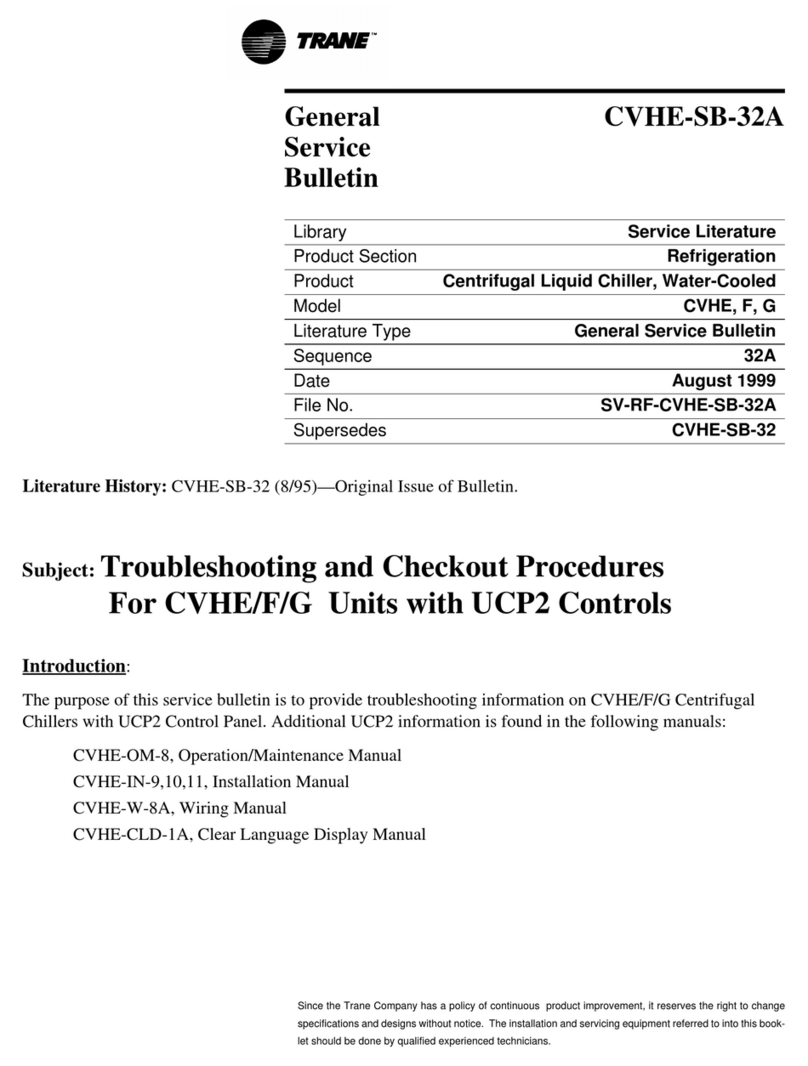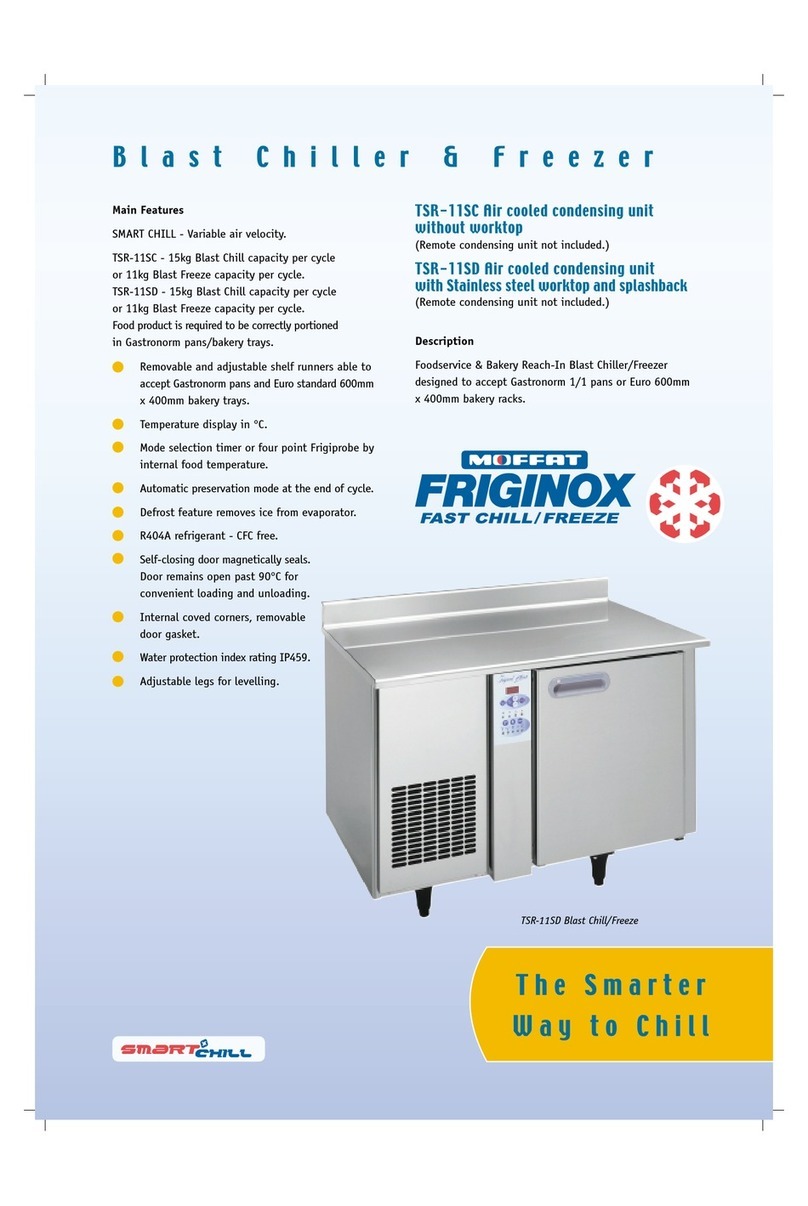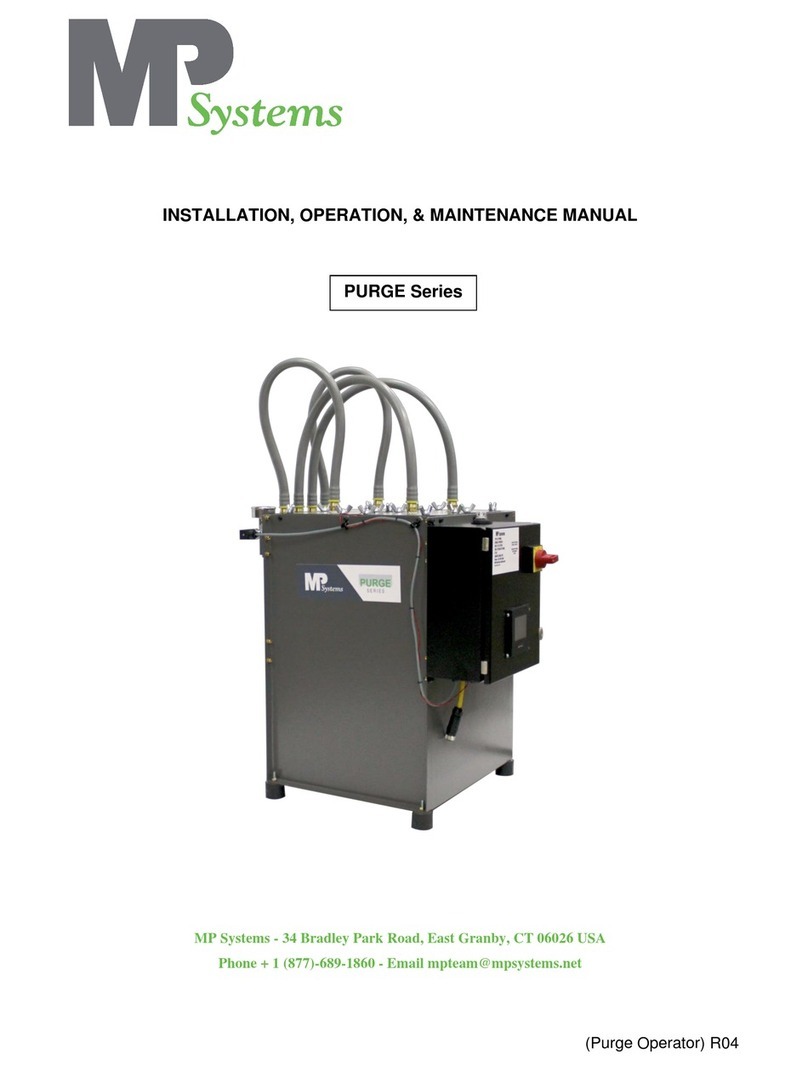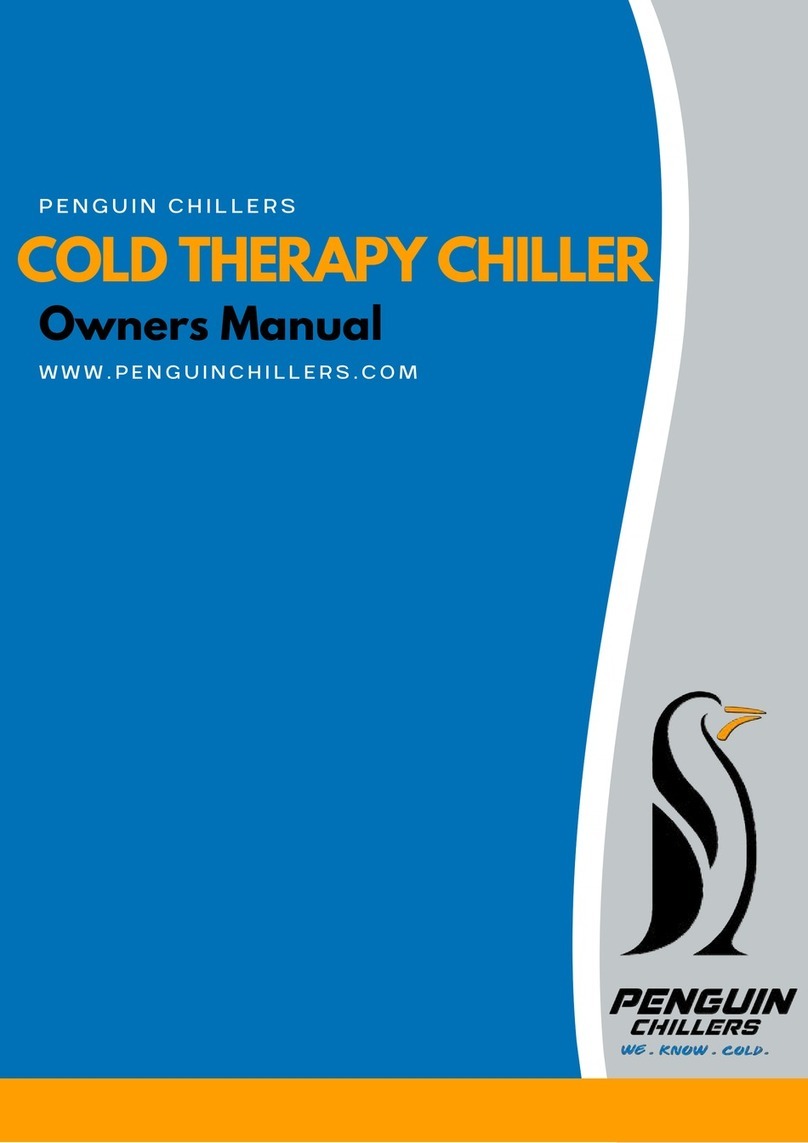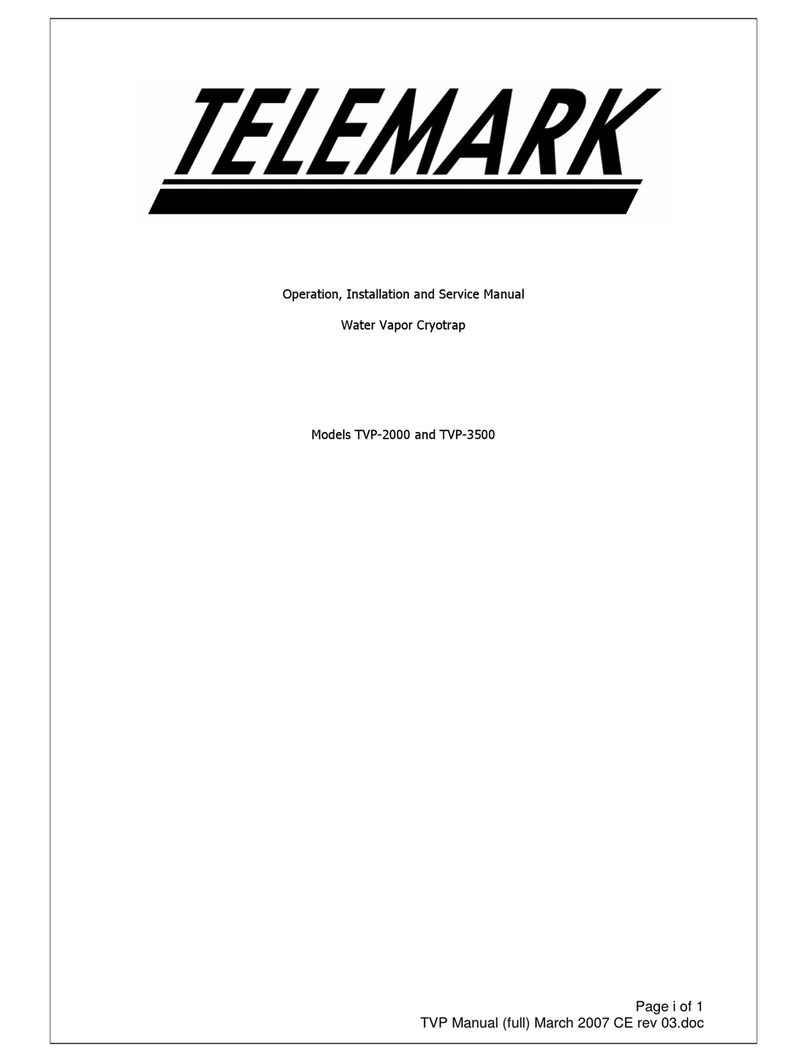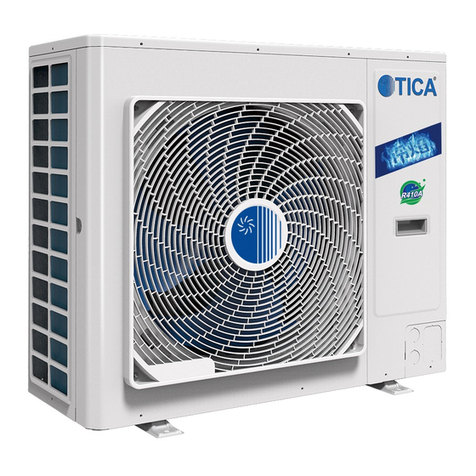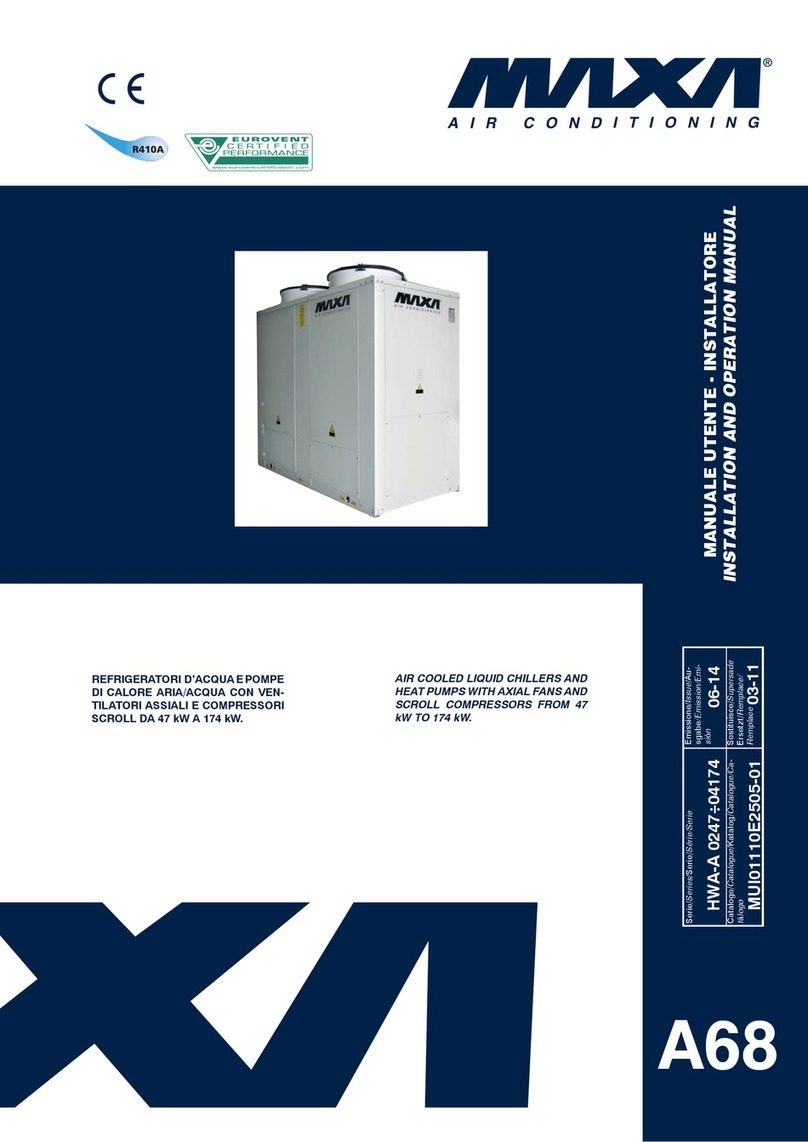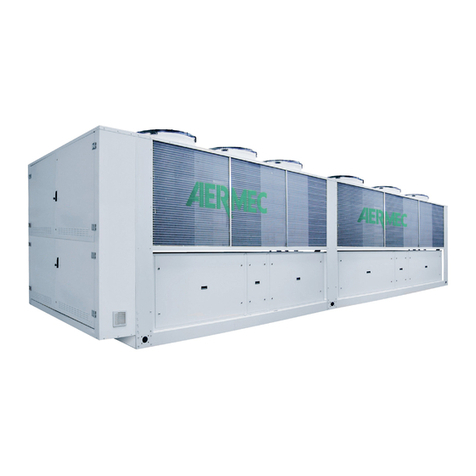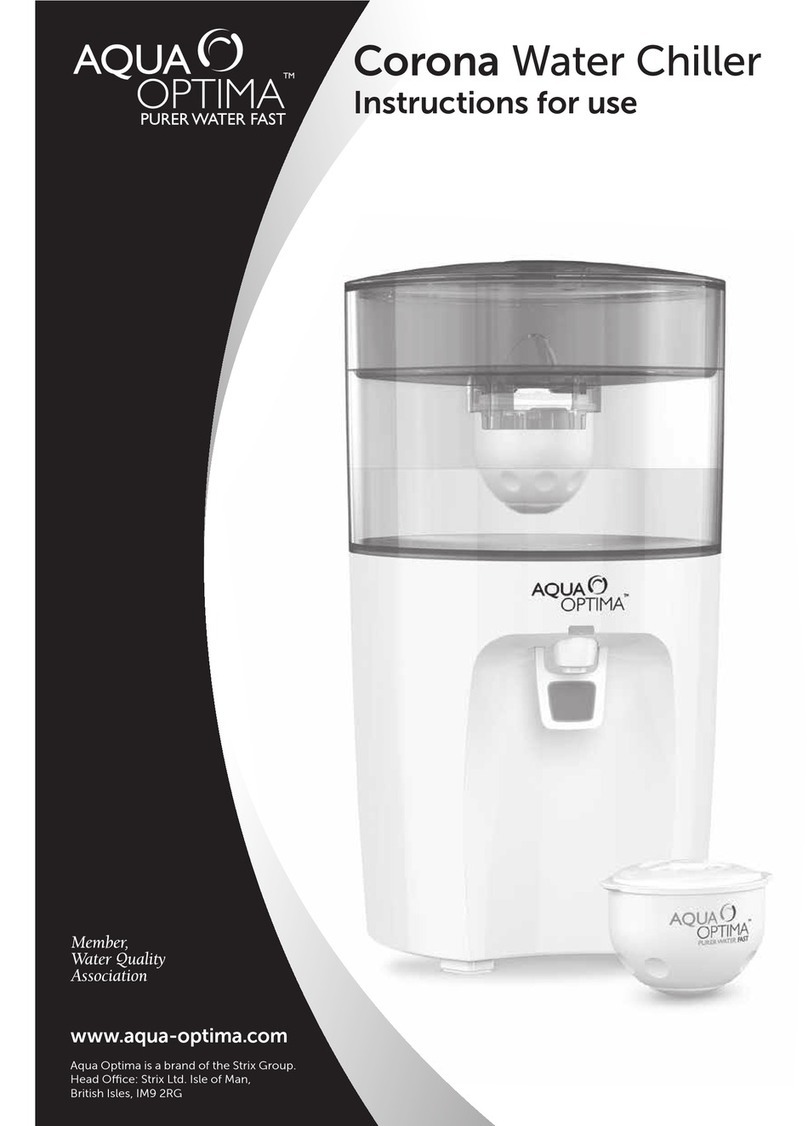
Quantech
10
Form QTC4-NM2
Issue date: 05/12/2023
List of tables
Table 1 - Unit lifting point locations .........................................................................................................................25
Table 2 - Minimum evaporator tube removal clearance ..........................................................................................30
Table 3 - Evaporator connections dimensions ........................................................................................................ 35
Table 4 - Standard 2 hp condenser fans, single point electrical lug data................................................................45
Table 5 - Standard 2 hp condenser fans, dual point electrical lug data ..................................................................53
Table 6 - EBM condenser fans, single point electrical lug data............................................................................... 55
Table 7 - EBM condenser fans, dual point electrical lug data ................................................................................. 63
Table 8 - Physical data, microchannel coil ..............................................................................................................66
Table 9 - Standard two-pass, right side inlet/outlet evaporator connections...........................................................70
Table 10 - Optional two-pass left side inlet/outlet connections ...............................................................................72
Table 11 - Standard two-pass left side inlet/outlet connections ..............................................................................74
Table 12 - Optional three-pass inlet/outlet connections .......................................................................................... 75
Table 13 - Isolator selection and mounting locations .............................................................................................. 78
Table 14 - Elastomeric dimensions .........................................................................................................................89
Table 15 - Elastomeric weights ...............................................................................................................................89
Table 16 - One inch deflection isolator dimensions.................................................................................................91
Table 17 - One inch deflection isolator weights.......................................................................................................91
Table 18 - Two inch deflection isolator weights.......................................................................................................93
Table 19 - QTC4 freeze damage protection requirements......................................................................................99
Table 20 - Flash card update error XXXXX...........................................................................................................108
Table 21 - Low differential oil pressure cutout....................................................................................................... 113
Table 22 - Discharge pressure load limiting/unloading ......................................................................................... 114
Table 23 - Suction pressure load limiting/unloading.............................................................................................. 114
Table 24 - Start inhibit sensor thresholds.............................................................................................................. 115
Table 25 - System sensor minimum and maximum outputs .................................................................................124
Table 26 - Compressor overload settings .............................................................................................................126
Table 27 - Setpoint limits.......................................................................................................................................136
Table 28 - Programmable operating parameters ..................................................................................................139
Table 29 - Setup mode programmable values ...................................................................................................... 140
Table 30 - Printout types .......................................................................................................................................154
Table 31 - System pressures ................................................................................................................................164
Table 32 - R-134a pressure to saturated temperature conversion........................................................................ 167
Table 33 - R-513A pressure to saturated temperature conversion .......................................................................168
Table 34 - Part numbers........................................................................................................................................173
Table 35 - Troubleshooting guide..........................................................................................................................176
Table 36 - R-134a pressure to saturated temperature conversion........................................................................ 179
Table 37 - R-513A refrigerant temperature to pressure ........................................................................................180
Table 38 - Temperature input voltage sensor, measured signal to shield at the sensor .......................................181
Table 39 - Outside air temperature sensor input voltage, measured signal to shield at the sensor...................... 182
Table 40 - Pressure transducer output voltage, measured signal to return at the transducer ..............................183
Table 41 - Motor temperature sensor resistance ..................................................................................................184
Table 42 - SI metric conversion.............................................................................................................................186
Figure 55 - Operating hours/Start counter key .....................................................................................................127
Figure 56 - History key..........................................................................................................................................128
Figure 57 - Setpoints key......................................................................................................................................135
Figure 58 - Program key.......................................................................................................................................137
Figure 59 - Options key ........................................................................................................................................147
Figure 60 - Date/time and schedule key...............................................................................................................150
Figure 61 - Manual override key...........................................................................................................................153
Figure 62 - Print key .............................................................................................................................................154
Figure 63 - System switches key..........................................................................................................................157
Figure 64 - Service connections ...........................................................................................................................160
Figure 65 - Leak test hold times ...........................................................................................................................161
Figure 66 - Evacuation of the chiller operation .....................................................................................................163
Figure 67 - Saturation curve .................................................................................................................................165
List of Figures, cont'd
